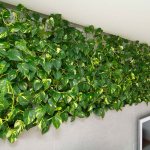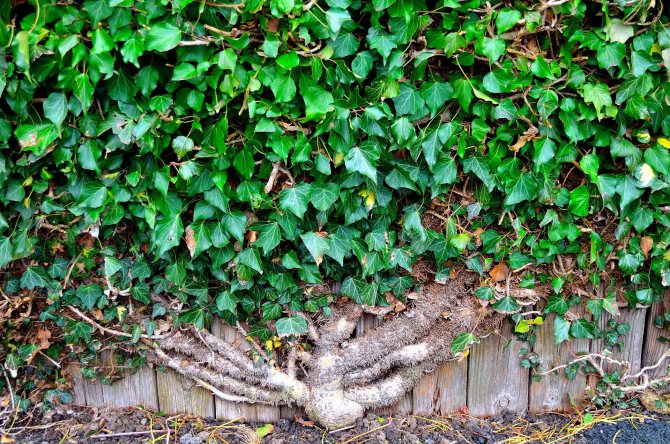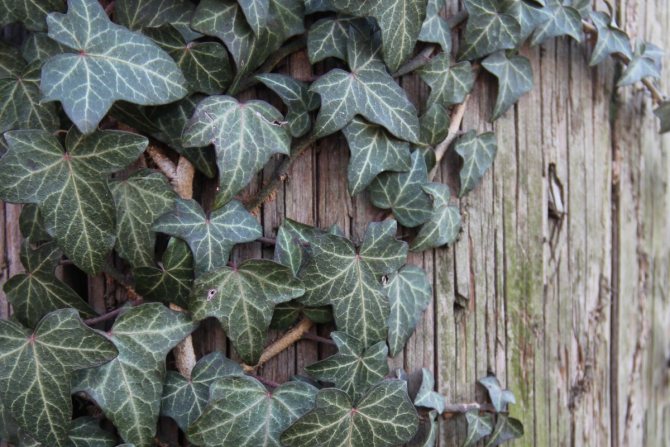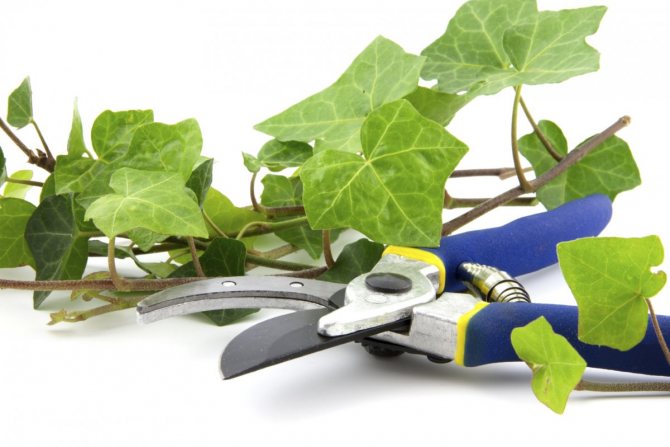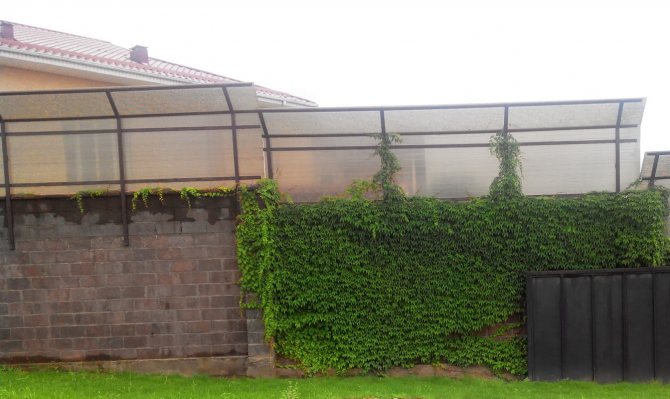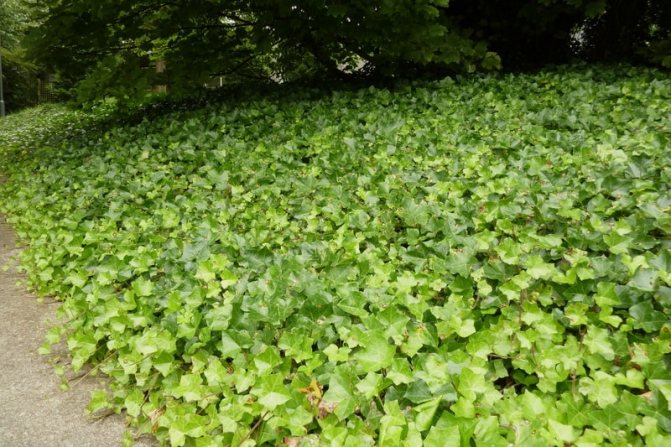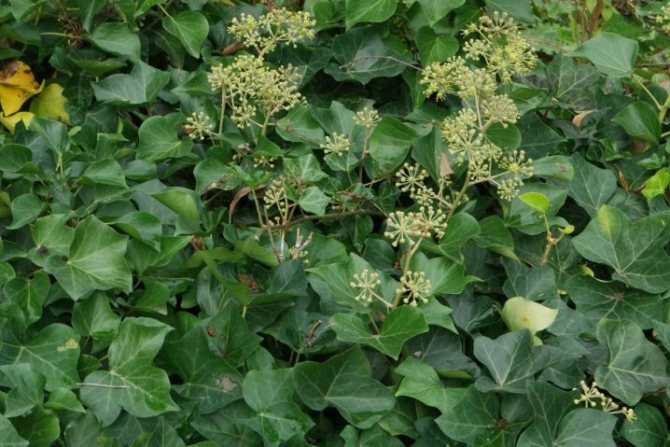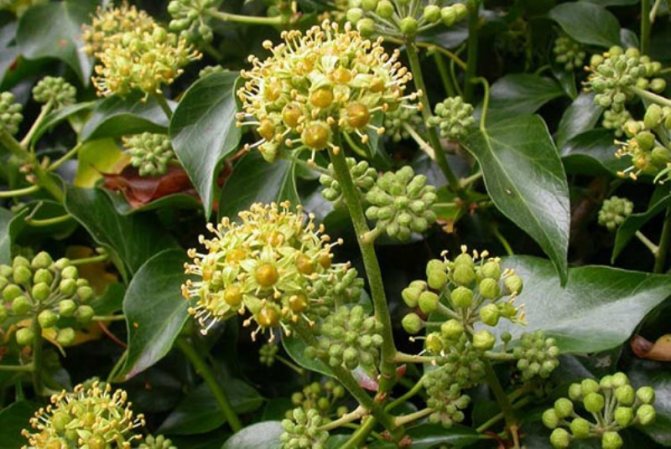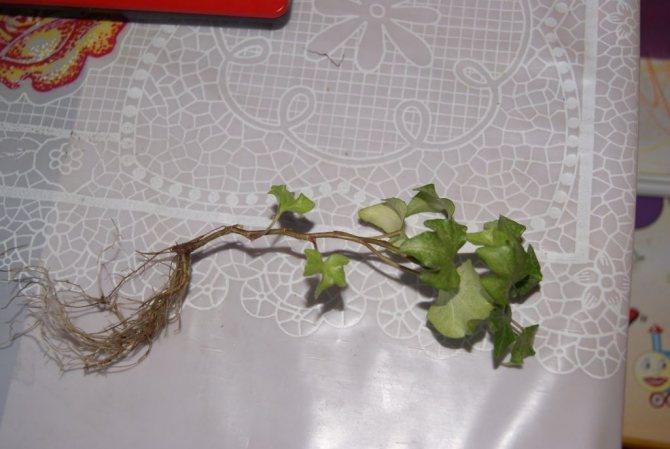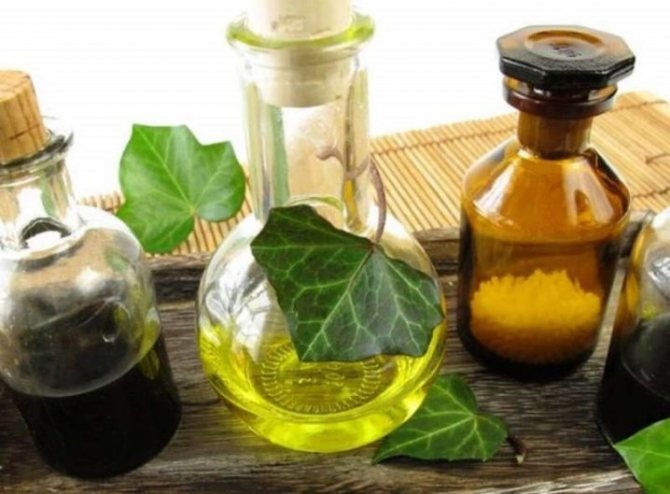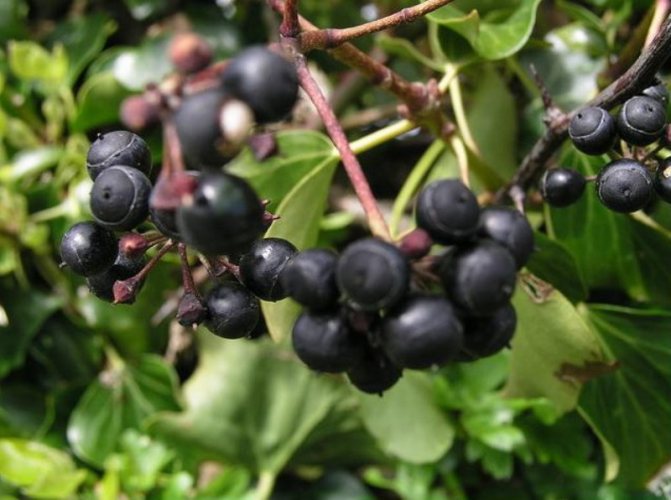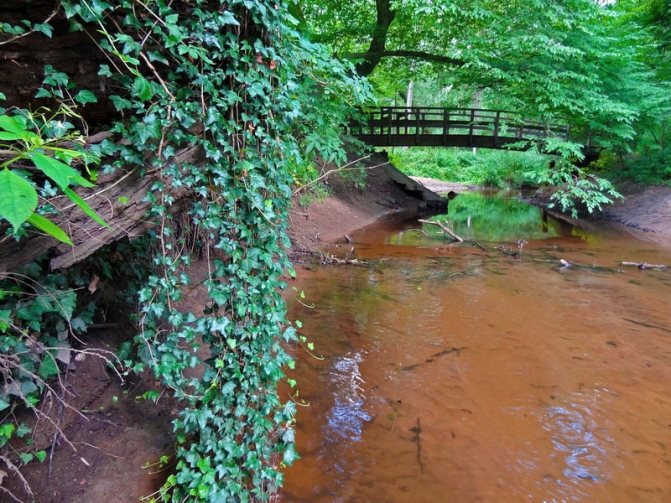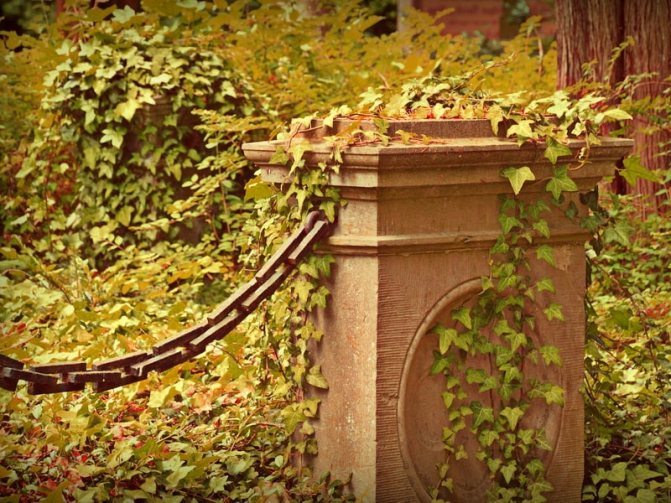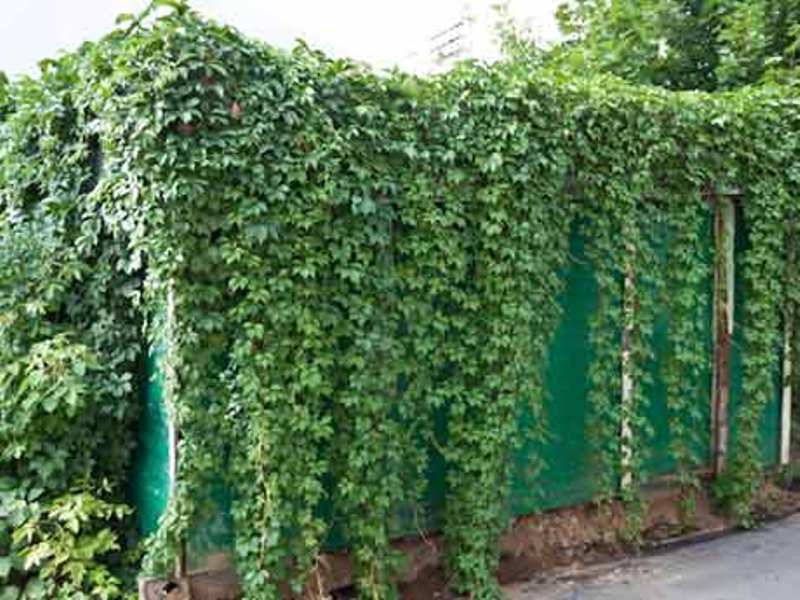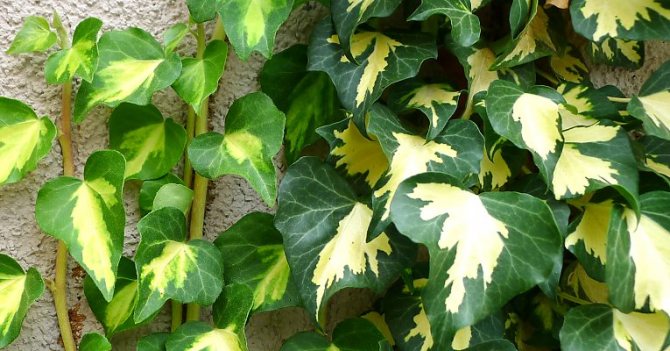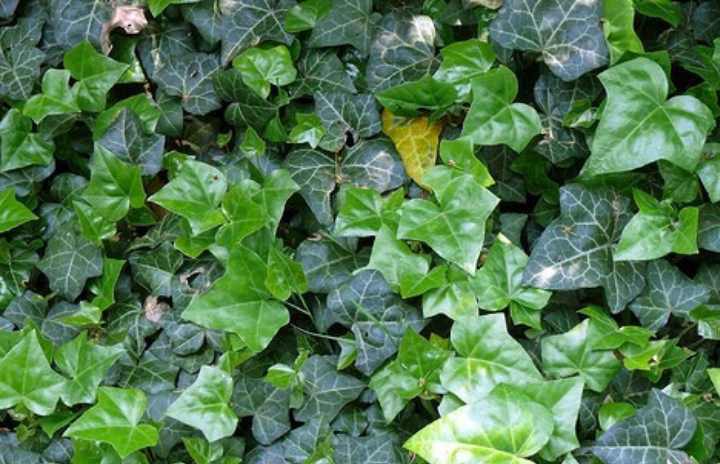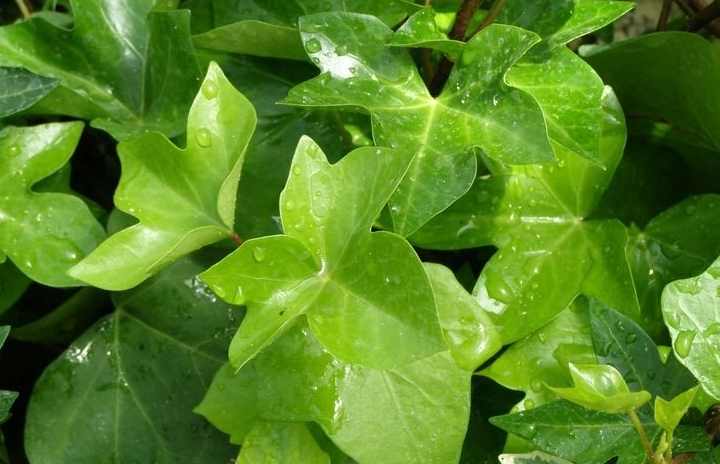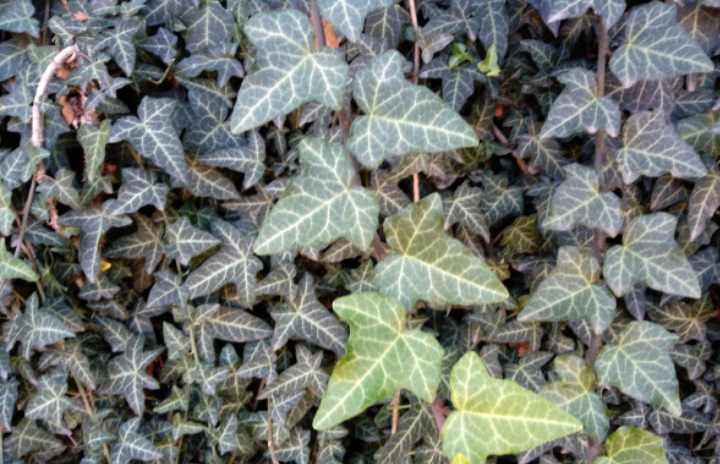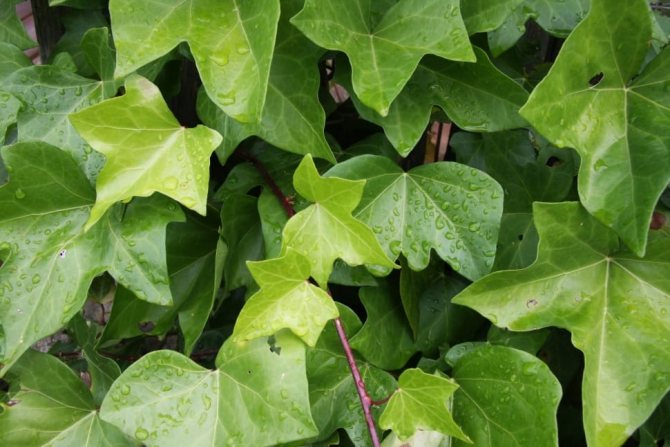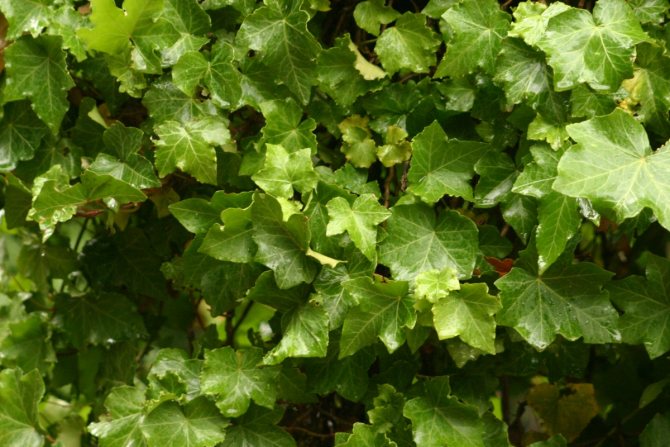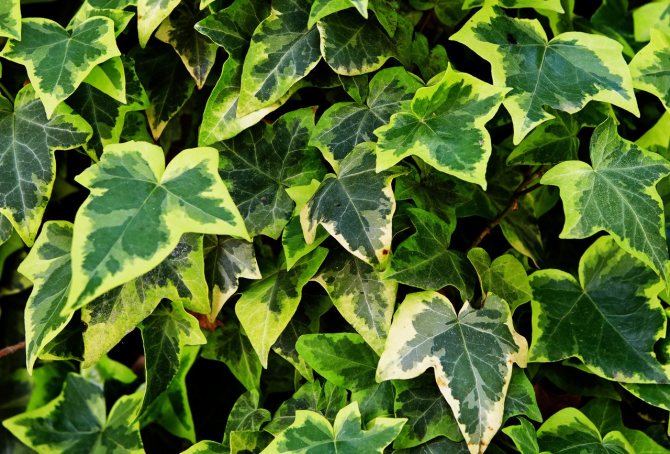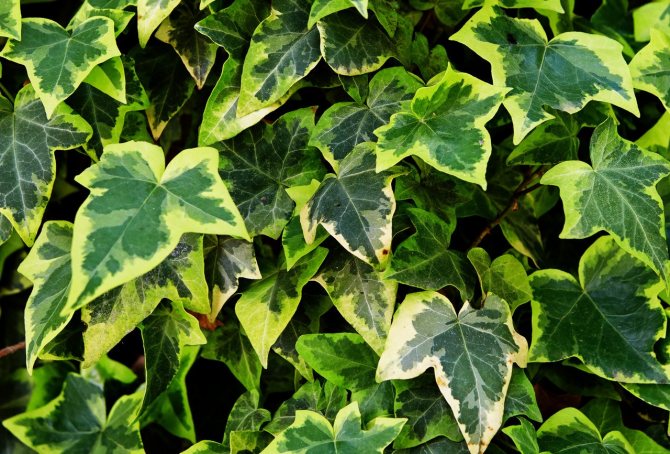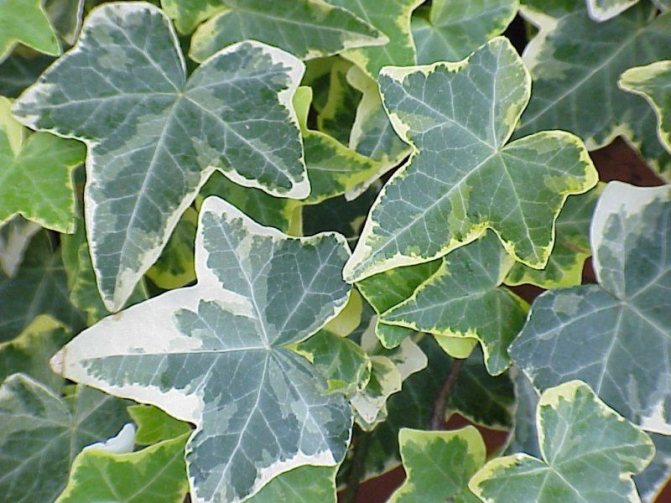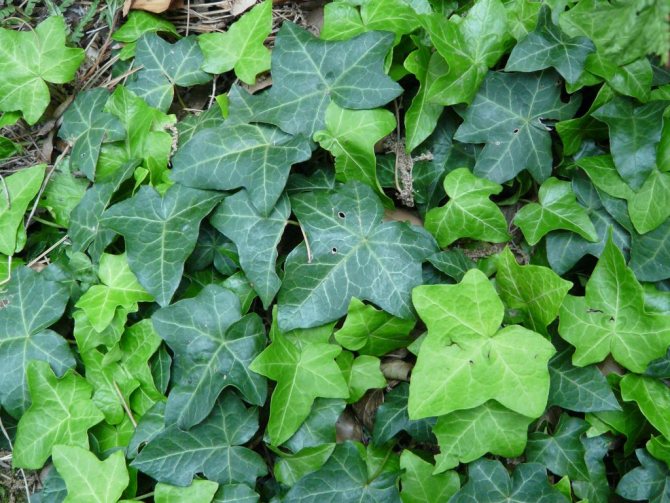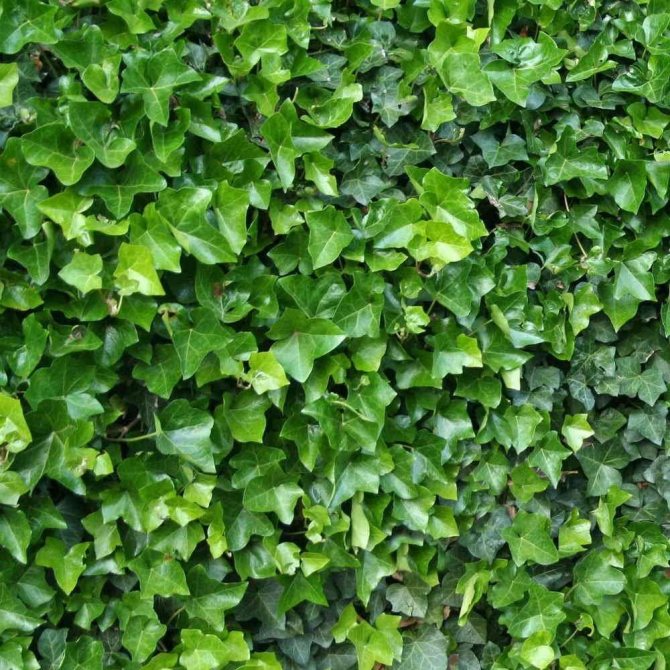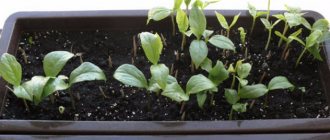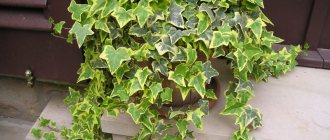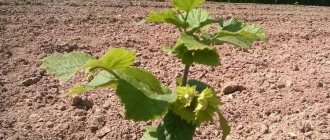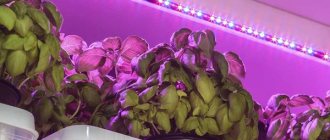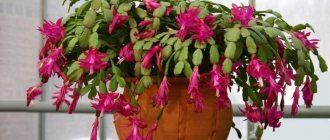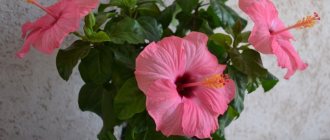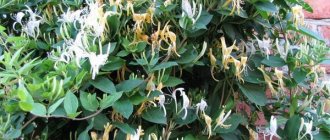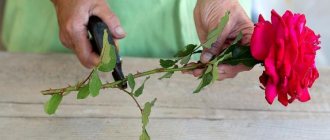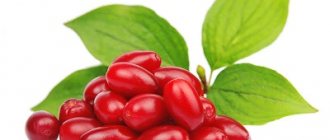Garden evergreen ivy is great for landscaping. Its use has long become a classic, because it is unpretentious and looks very aesthetically pleasing. Most often it is used to create "European corners" in the garden. The stone wall is boring, and the wall along which the ivy winds has a completely different look, reminiscent of an old European city. And if you put another bench there, and hang an old lantern, then the coincidence will be even more complete. Let's see what the planting and care requirements are for this decorative vine.
Description of garden ivy (Hedera)
This type is the most common due to its increased resistance to cold and unpretentiousness. Ivy can be grown as a houseplant, but it looks great in the garden too.
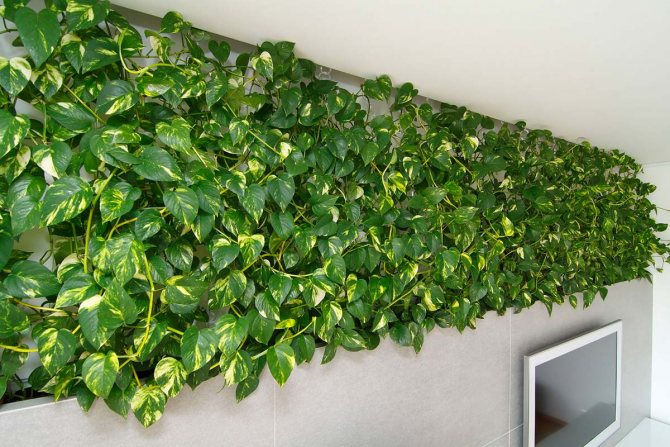
Decoration inside the house with ivy shoots
Garden ivy - evergreen and frost-resistant
In Russia, common winter-hardy ivy is popular. The first two years have seen slow growth. The plant is used as a ground cover crop and for landscaping vertical structures.
For your information! Ivy prefers partial shade without wind.
Characteristics of garden evergreen ivy
Climbing vine shoots are capable of reaching 30 m. It is firmly attached to a vertical wall or tree due to sucker roots.
In total, there are 15 species of ivy and over 1000 varieties. The leaves can vary in color, size and shape, depending on the variety.
The variegated species are given some decorative effect by the white edging of the leaves, dark or light blotches compared to the main background. The leaves are dense to the touch with a smooth surface. October and September are considered the flowering period of the plant. Light green umbrella-shaped inflorescences.
Important! The fruits of the flower are poisonous, they look like black peas with a blue tint.
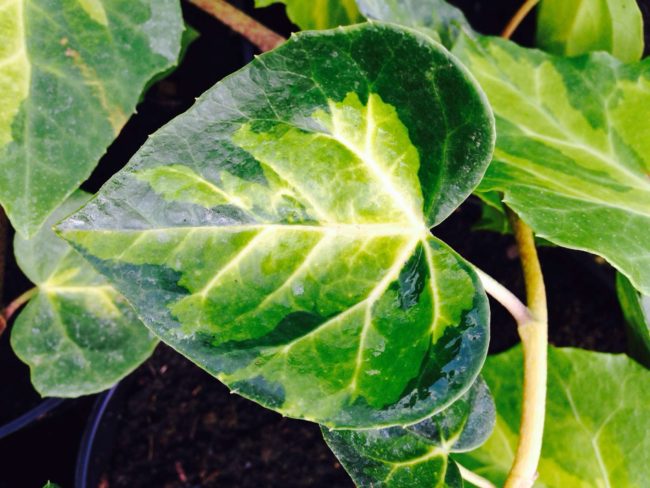

Ivy types for the garden
Is it possible to buy ivy seeds
A large number of ivy varieties are found in botanical stores. The unpretentious forms that this graceful plant takes can be used to decorate walls, fences, as well as roofs and trees.
Note! The most common are: Baltic, graceful, winter, miniature, etc.
There are also differences in physical properties among the species. That is, this or that variety of ivy loves cool more and vice versa. Some thrive better in cool seasons, others in warm seasons. In addition, a certain type has a specific leaf shape: rounded, pointed, and also oval.
Popular species and varieties
Fig tree - how to plant in the garden
The plant is a thermophilic crop, therefore it is most often found in the south. Some frost-hardy vines grow in temperate climates. Here are the main types of ivy:
- ordinary. It is the most common plant used for outdoor and indoor planting. The leaves are medium-sized, have a five or three-toed shape. The foliage may have blotches or shine, depending on the variety. Growth is moderate, up to 20 m in length, braiding nearby surfaces. Ivy is used for vertical landscaping of structures and buildings. Better to plant in partial shade. The most popular frost-resistant varieties are Goldhert, Mona Lisa, Eva, Sagittaefolia;
- Caucasian, or Colchis.It is a fast growing plant with large dark green leaves and strong shoots. Liana is able to braid the surface up to 30 m high, grows in the shade. Popular garden forms - Dentata Variegata, Arborescens;
- Crimean. Ivy is unpretentious, grows quickly, is resistant to cold and drought. As it grows, lignification of the shoots is noted, which entwine shrubs and trees. The length of an adult liana reaches up to 30 m, and the trunk in a circle is up to 1 m.
Each species has its own characteristics and characteristics, but they are ideal for landscaping a garden.
What is this plant
In world history, many legends and myths are associated with this plant. The legend about Deonis says that as a baby he was protected by the suddenly appeared thickets of ivy from certain death. Proof of this is that he, being the god of winemaking, adorned himself with the leaves and shoots of this beautiful plant.
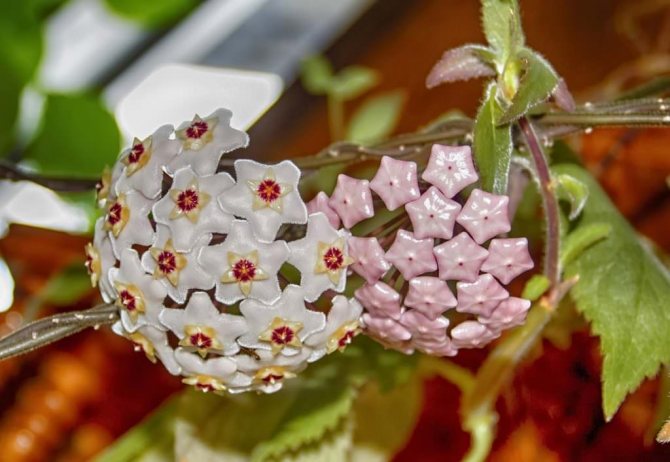

Wax ivy (hoya) is found in nature. It is very similar to a liana, and the name "wax" is associated with the special shine of the leaves. Hoya ivy is very common among amateur gardeners, as well as in the wild with a temperate climate.
For your information! In Egyptian, Christian, and Semitic cultures, ivy attached to a support signified devotion and immortality.
So, having got acquainted with ivy, you can proceed to the methods of its reproduction.
Ivy care
Dracaena Marginata - how to plant and care
The wind carries the whitefly, ticks, aphids, thrips, which are dangerous for ivy. Insecticides must be used as soon as the pests have been noticed on the leaves, stems.
Note! Diseases and parasites can be recognized by yellowed, pale or fallen leaves.
Sometimes it is required to carry out a second procedure for getting rid of pests.
Ivy propagation by cuttings
It is recommended to use apical cuttings that can multiply quickly. To grow a seedling you need:
- Cut cuttings up to 10 cm long that have at least one healthy knot.
- Plant in a pot or root in loose soil in a greenhouse, water.
- Transplant the ivy to a permanent location while forming a sufficient number of roots.
For your information! Cuttings from a young plant root poorly, and sometimes even rot.
Preparing for winter
Low temperatures can have a detrimental effect on the plant, especially in the areas of the Middle Lane. Covering the soil with an additional layer of mulch will allow you to save the vine. In winter, it is recommended to pour snow up to 30 cm high on the soil. Experienced flower growers cover whips growing vertically with plastic or burlap.
Important! The top coat should be removed in early spring to avoid damaging the stems due to high humidity and temperature.
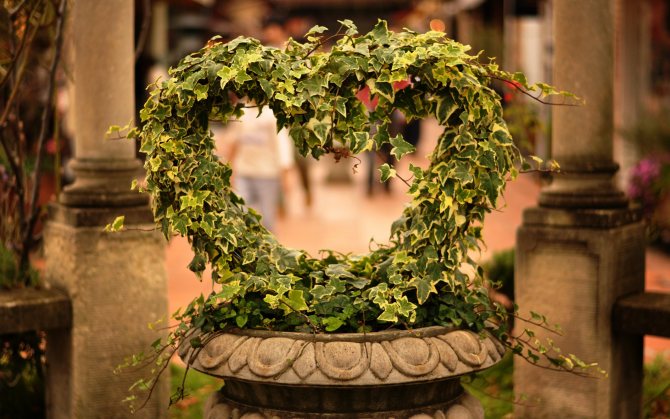

Planting an outdoor plant in a pot
Landing
The best time to plant vines is early spring. For planting evergreen ivy, choose a suitable place. Ideal would be an elevated area where there is no stagnant groundwater, no drafts and strong winds, shaded from direct sunlight. The best soil option is loose, fertile, with a neutral or slightly alkaline reaction, with good aeration and moisture permeability.
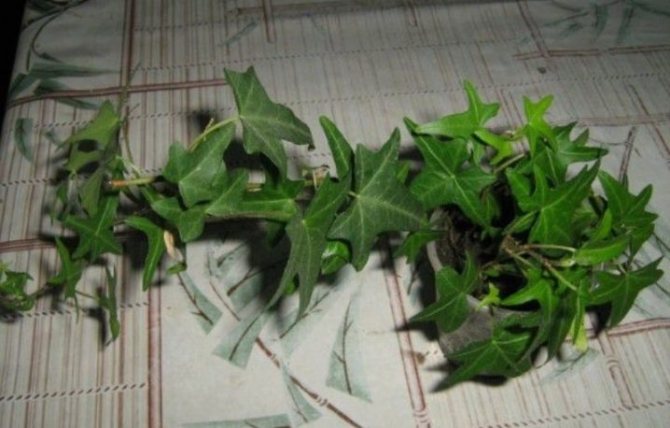

It is necessary to prepare the planting hole in such a way that the roots of the seedling fit freely into it during planting. A drainage layer is laid in the pit (fine gravel, pebbles are suitable) and a little soil mixture is poured. You can take a ready-made substrate purchased from a specialized store.
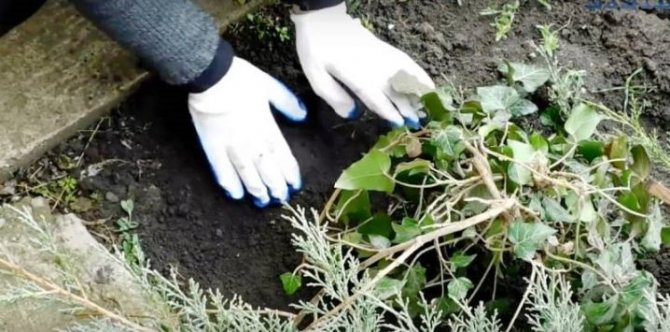

The prepared seedling is placed in a hole, the soil is laid and the near-stem zone is slightly compacted, then the plant is abundantly watered. When planting several seedlings, they are planted at a distance of half a meter from each other.
In order for a young vine to take root well, you need to properly care for the plant from the first days of planting.
Ivy care procedures are not particularly difficult and do not contain any unthinkable manipulations. It is enough to carry out simple elements in a timely manner: watering, feeding, mulching, pruning, loosening the soil, preparing for winter, in accordance with the recommendations of florists.


Watering
Proper watering is essential for healthy, ornamental garden ivy to grow. Do not water the plants too often or dry out the soil. The frequency of watering directly depends on the weather conditions - during rains (depending on their intensity), watering is reduced, and in dry weather, it is increased. Determining the readiness of a plant for watering is quite simple - you need to check the soil under the vine and the condition of the leaves.
If a crust has formed on the soil, and the leaves have slightly wilted, it's time for watering. Water the plant, loosen the soil under it, and it will soon take on a healthy appearance.
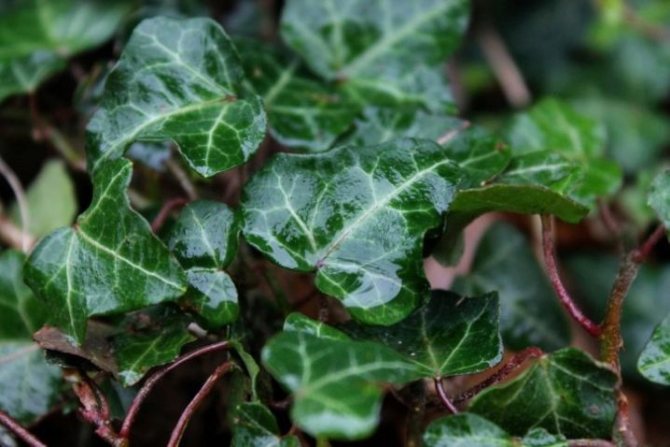

Mulching and loosening the soil
Periodic loosening of the soil under the headers and mulching with organic materials (fallen leaves, sawdust, peat chips) ensure optimal air exchange and moisture retention for successful rooting of young plants. The past heavy rains can "overwhelm" the soil, so you need to carefully loosen the soil, avoiding damage to the roots, in order to provide the root system with full breathing and moisture saturation. Scatter a thin layer of mulch under the vines, and gradually increase its thickness as autumn approaches.
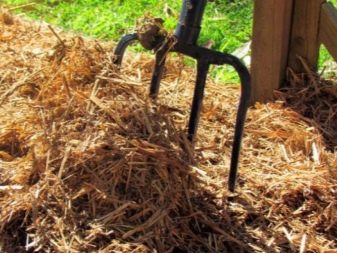

Top dressing
So that the street liana does not lose its decorative properties and decorates the landscape of the site, you need to periodically help it restore strength to form new shoots. For this, complex nitrogen-containing fertilizers are used at the beginning of summer. Since July, they switch to top dressing with potash and phosphorus fertilizers, which will help the plants to harden before wintering.
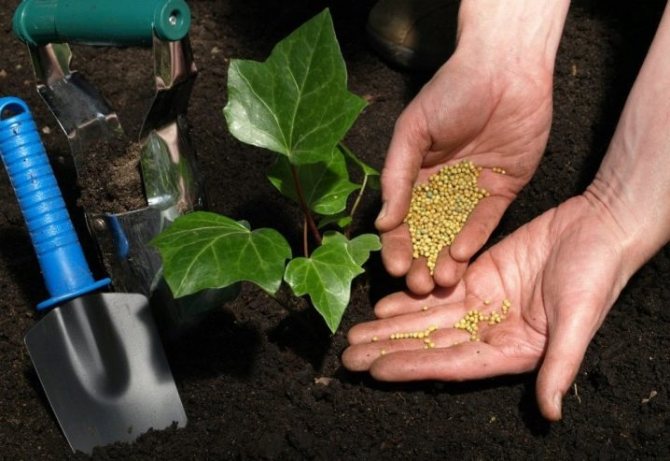

Pruning
To make farm buildings or hedges braided with vines look aesthetically pleasing, it is required to periodically trim and pinch the growing shoots. After pruning, ivy will have many side shoots, which will give the vine a more effective decorative effect. You can start pruning only after the end of the spring sap flow, which will come around the beginning of June.
Processing the cuts with garden pitch or activated charcoal will save the vine from possible damage by plant infections.
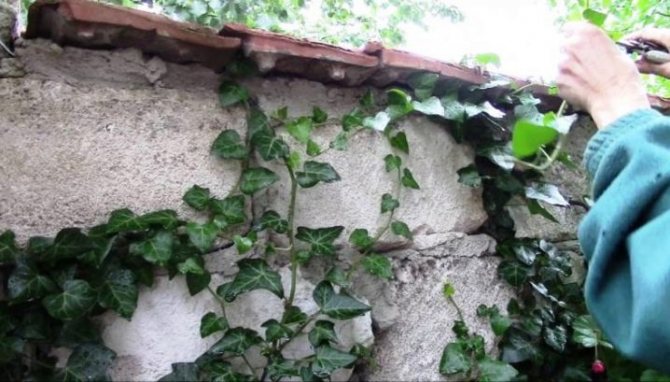

Preparing for winter
The high frost resistance of garden ivy allows them to do without winter shelters in areas with a mild climate. A layer of mulch and snow cover provide sufficient frost protection. In areas with colder winters, vines need to be covered for the winter. It is best to carefully remove them from the support, spread them on the ground and cover them with burlap, a special covering material, and coniferous spruce branches.
In the spring, when the snow melts, the shelter must be removed in a timely manner so that the shoots do not suffer from damping off.
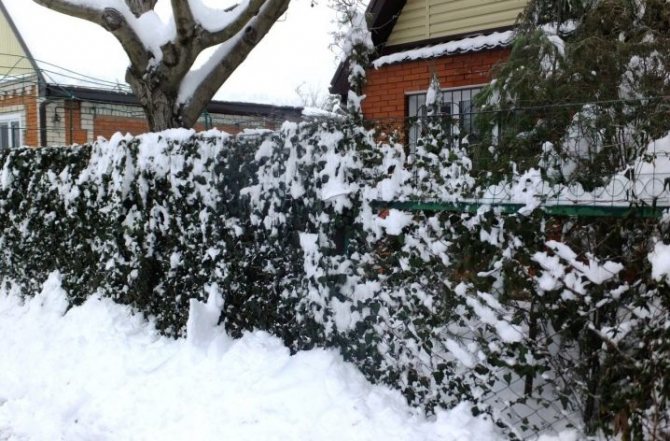

Possible problems in growing garden ivy evergreen outdoors
When growing a plant, thrips, whiteflies, aphids, ticks and windborne insects are the most dangerous. When pests appear on the leaves or stem, you must immediately start treating perennial street ivy with insecticides. Liana should be sprayed with karbofos or actellik diluted in water. Sometimes it takes several irrigations to completely destroy the parasites.
Garden fern - planting and care
The affected areas must be removed so that the infection does not spread to the stems and leaves that are nearby.
Violation of the rules of care
There are several signs by which you can find out about the presence of pests or diseases:
- yellow and dry leaves indicate an excess of fertilizers, moisture;
- the pallor of the plant indicates a lack of ultraviolet rays, so it should be transplanted from the shade to an area with good lighting;
- yellow foliage signals dryness of the soil, therefore, it is required to control watering;
- dry air leads to the falling of leaves, spraying with water from a hose will remove the problem.
Important! When parasites appear on a vine, it is necessary to inspect all closely growing crops.
Three breeding methods are used for garden ivy:
- Cuttings.
- Rooting of layers.
- Separation of old bushes.
Old, overgrown, turned into whole colonies of ivy, some of the shoots of which have taken root and gave rise to growth, can be divided. It is not necessary to dig out the entire plant for this: it is enough to separate part of the plants around the perimeter and use them as independent seedlings.
With any breeding method, it is worth adhering to the general rules:
- For rooting of both cuttings and layers of ivy, annual shoots are chosen, in extreme cases - biennial shoots.
- When choosing branches, you should carefully examine them: semi-lignified, strong shoots with visible aerial roots or their rudiments give results faster than very young branches.
- It is better to reproduce ivy in the spring or in the first half of summer.
How to plant street ivy
Planting an outdoor plant differs slightly from an indoor plant. You need to know all the nuances of the care and reproduction of evergreen vines before planting ivy at home.
Preparation and planting of purchased planting material
The seedlings are planted at a distance of 50 cm from each other to facilitate future care. Ivy root and drainage should be placed in the hole. When planting, the soil is compacted and abundantly moistened. Air must be supplied to the rhizome, therefore, it is required to control the state of the upper soil layer. It can be loosened or covered with peat, sawdust, leaves, etc.
Ivy breeding conditions
It is not difficult to plant greenery with a climbing plant if you immediately purchase new seedlings. But the garden vine can be propagated independently, although the task is not very simple. The main thing is to choose the best way and follow all the transplant rules.
The main methods of propagation of plants that grow in open ground near the house or in the country:
- rooting of cuttings;
- cuttings;
- separation of perennial shrubs.
Old ivy can be detached without the need to completely dig it out. Part of the vines should be removed around the perimeter, using these branches as independent seedlings.
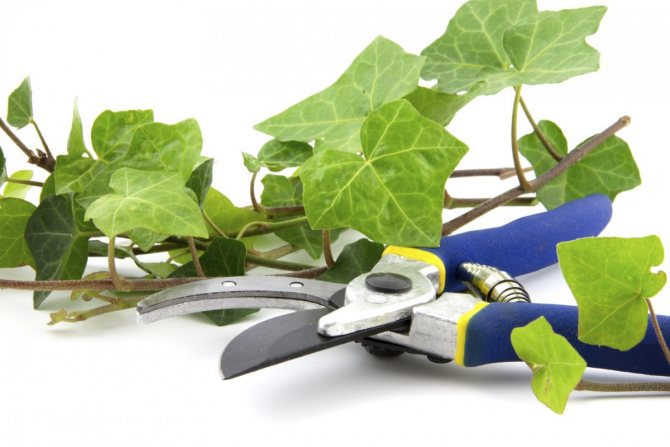

Propagation by cuttings
Cuttings are the main breeding method for ivy
The twigs of a houseplant take root quickly, so plain water is often used. For garden vines, different methods are used, but grafting remains the main one. The ivy scourges begin to take root after a few weeks.
It is recommended to use annual shoots, stem and apical cuttings are suitable. The former require the separation of a whole shoot with 8-10 leaves. Select not too small apical cuttings, 10-20 cm long, which must be cut at an angle. The lower two pairs of leaves are cut.
Plant cuttings can be rooted in:
- mixtures of sand and peat;
- water;
- soil with a high sand content;
- solution of rooting stimulants.
Note! For the procedure, different containers, containers, greenhouses and even mini-greenhouses in the open air are used.
It is not necessary to cover the ivy and create conditions with the optimal temperature regime. The main thing is to stably maintain moist soil. Covering with a cap slightly speeds up rooting, the same effect can be achieved using growth stimulants.
The apical cuttings must be planted in the ground, deepening them to the first leaves. The average rooting period is 2-6 weeks, after which the vine can be transplanted to a permanent place.
Stem cuttings are laid horizontally on the soil surface. Shoots need to be pressed to a depth of 2 cm, leaving the leaves on top. Basically, the stem is left intact, but it can be divided into cuttings with one leaf node. Rooting time is 2 weeks, after which the tip of the shoot begins to grow intensively. Plants should be separated only after 2 weeks.
For your information! It is better not to immediately transfer rooted cuttings to a permanent place; it is recommended to use a separate bed or container for growing. The final transplant is carried out in early autumn or late summer, but early spring is the best time. During this period, the plant will grow a rhizome and will be protected from frost.
Rooting layers in ivy
The plant can be propagated by layering, like other types of climbing vines. Scourges located on the ground are able to take root on their own. This process can be stimulated to produce strong stems. Rooting cuttings is a very popular propagation method and is ideal for those looking for a few new plants.
Even for novice florists, the procedure will seem simple:
- In a small trench, it is necessary to lay the lower shoots of variegated garden ivy for growing vertically or along the perimeter for plants growing horizontally. Strong and long shoots are used for reproduction. To speed up rooting, it is necessary to make cuts on the branches.
- In the ground, the branches are fixed with staples, sprinkling them on top with a nutrient mixture or substrate.
- Stable humidity will allow you to maintain abundant watering first, and then regular moisture.
Do not rush to plant new stems after rooting. The next spring, you can separate new shoots as an independent plant and lipstick in a permanent place.
Preparation for planting in open ground
It is recommended to plant the plant in an elevated location without wind. A completely open area must be avoided because the leaves can be burned by direct ultraviolet rays. Better to choose partial shade.
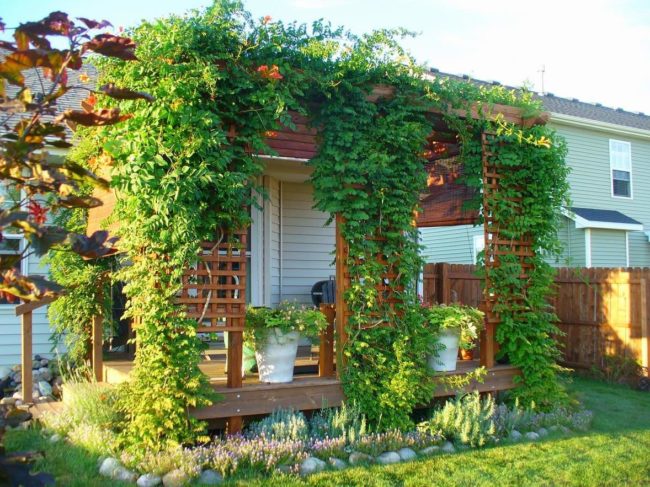

Evergreen liana in the country
The next step is to prepare the ground. The soil must be breathable and moist.
When buying an already grown seedling, you need to pay attention to its condition. A healthy plant has a developed root system.
Important! It is not recommended to plant the plant on clay soil because the roots will not receive enough oxygen.
How to propagate?
The best way to propagate ivy is by cuttings. In spring or early summer, healthy semi-lignified shoots are chosen and cuttings of 12-20 cm each with rudiments of aerial roots are cut from the apical parts. The lower part of the cutting is cleaned from leaves to the level of immersion in the ground and moistened with Kornevin solution to stimulate the formation of the root system.
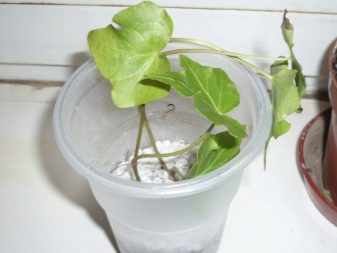

You can root cuttings in a container with a nutrient substrate, in water or directly in the soil. The safest way to do this is in a loose soil substrate. The cuttings are placed in the ground by one third, watered and left for about a month and a half, constantly keeping the soil moist. After rooting, new seedlings should be transplanted into the garden for further cultivation.
Common ivy can be propagated by layering. To do this, you need to bend the lower stem to the soil, fix the contact point with metal pins or wooden slingshots, sprinkle it with earth and ensure regular watering.
The air roots will quickly grow and turn into soil ones. The next year, the rooted plant will be ready to be planted in its permanent location. It is separated from the main bush and transplanted.
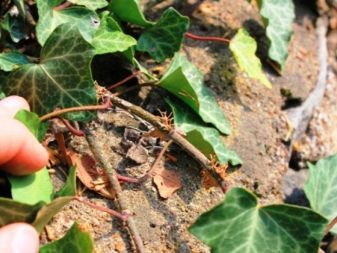

Ivy in the country
The best shrubs and trees are always planted at their summer cottage. A curly liana will decorate a place that is used for rest.
How to plant ivy on the site
Many gardeners are interested in how to grow variegated garden ivy.It is better to plant cuttings in spring in breathable and nutritious soil to a depth of 15-20 cm.
Note! With heavy soil, it is necessary to dig a hole a little deeper and make drainage from expanded clay or broken bricks.
A young plant should be directed to a support or fence. Watering is carried out moderately so that there is no stagnation of water. You can fertilize the vine with organic feeding once a month. Shoots should be covered before winter to avoid frostbite on stems and roots.
Use in landscape design
Evergreen vines attract attention due to the variety of color and shape of the leaves. Designers use the plant to decorate vertical surfaces:
- sculptures;
- walls of the house;
- arches.
Note! When creating a structure, it is necessary to constantly direct the growing shoots in the right direction.
Combination with other plants
Common garden ivy can be combined with other plants that can embody any design ideas. Liana is planted near roses, flowering shrubs and conifers. As a result, the gardener gets ivy climbing the wall, which is pleasing to the eye.
How to prevent overgrowth of garden ivy evergreen
Gardeners are not always happy with the intensive growth of the plant, which begins to braid nearby trees and bushes. To get rid of ivy, you need to cut it at the very root, dig up the entire root system and make sure that there are no shoots left on the ground. Herbicides are sometimes used.
Compliance with the rules of care, planting and reproduction will allow you to achieve a good result. Evergreen ivy will grow quickly and beautifully. With the help of the plant, they create an original landscape design, decorating the hedge, other shrubs and even the walls of the house with greenery.
Application in landscape design
Gardeners actively use heders in landscape compositions on their plots. Curly lianas, intricately entwining various buildings and hiding unattractive areas in the country, are a fabulous sight. Ivy can transform an empty wall, gazebo, arch, pillar, column. And this will not require any special worries from the site owners. Ivy get along well next to various types of shrubs - be it conifers, deciduous or planting roses. Subject to cultivation techniques and proper care, fresh climbing vines will decorate your site for many years.
Layering and dividing the bush
If the vine is used for vertical gardening, layering can be used to obtain planting material. To do this, next to the bush:
- make a shallow groove (2-2.5 cm);
- fold back the nearest shoot and place it in it;
- fix and sprinkle with soil so that the leaves remain on the surface;
- the soil is kept moist;
- after 10-20 days, roots should appear along the entire length of the stem;
- after the appearance of a young growth, the shoot is divided into parts so that each has 2-3 leaves;
- ready-made seedlings are planted in a permanent place.
For the reproduction of evergreen ivy, especially its old specimens, a division method is possible. However, it is less desirable: its fragile root system does not like interference.
Ivy - can I keep at home
Ivy properties
Ivy has long been known to mankind for its healing properties used in folk medicine. Ivy is also used as a raw material for the manufacture of medicinal products and cosmetics. Scientists have proven that the substances contained in the wood of the plant successfully relieve spasms, therefore, wood preparations are used in the treatment of acute bronchitis. And ivy leaves have antifungal, antitumor, antibacterial and expectorant properties. Softening gels made from ivy leaves and wood are used as an additional agent in the treatment of purulent dermatoses, obesity and cellulite.
- Stefanotis at home
However, be careful, because poison ivy, or rather its fruits, which children mistake for edible berries, cause poisoning.
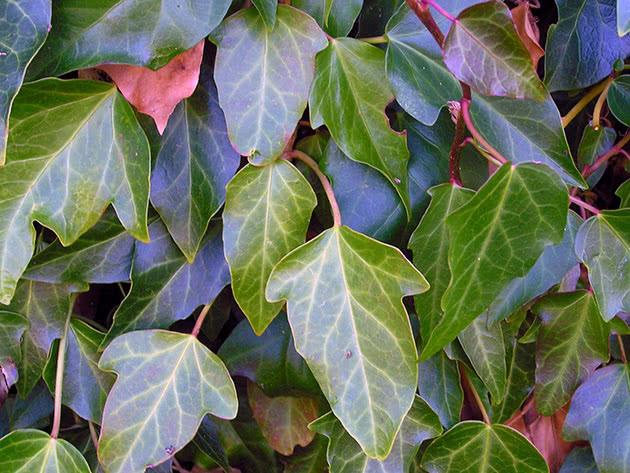

Ivy - signs
The OBS Agency (one grandmother said) claims that the indoor ivy flower is a muzhegon, an energy vampire, that it attracts loneliness and other misfortunes to the house, and if you do not like this plant, you can convince yourself and others that you do not want to keep ivy at home because you love your husband and take care of your family. But historical documents claim that in the ancient world - Greece and Rome - ivy just symbolized fidelity and happiness in marriage, and in the east it is still considered a source of vital energy. Which signs to believe, choose for yourself.
From myself, I will add that caring for home ivy is so simple, and its decorative qualities are so undeniably high that it would be foolish to refuse to grow ivy in an apartment. In addition, ivy can be kept at home in a place where he will not have time to absorb your energy (if he does it at all) - for example, in the kitchen, where ivy will have to cleanse the air from carcinogens and other harmful impurities day and night.
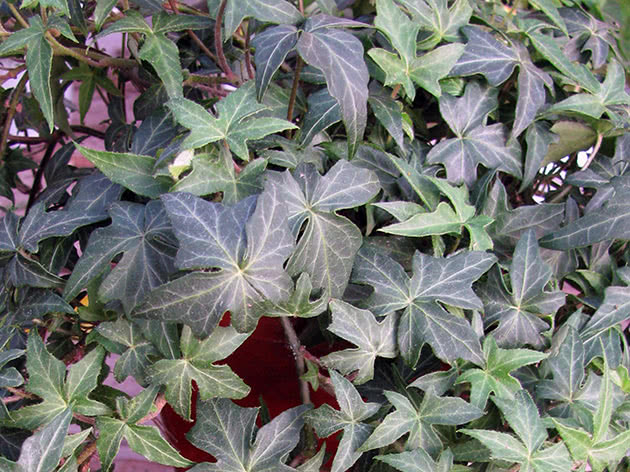

Basic requirements for growing
Ivy is loved by gardeners for its unpretentiousness and ability to fit into any environment. In addition, the plant is prized for its ease of propagation.
How to deal with major ivy diseases and pests
Ivy is susceptible to various lesions that can ruin its appearance or even ruin the plant. Therefore, it is important to know about them in advance in order to identify and eliminate in time:
- Spider mite... This insect is very fond of settling on both indoor and outdoor plants. The prerequisite for its appearance is the reduced air humidity. The mite does not tolerate high humidity. The insect feeds on ivy juices, forming a kind of cobweb on its leafy plates. A large colony can cause small or large ivy shoots to die off. Before using chemicals, sprinkle the above-ground part to increase the overall humidity. Further, various insecticides are used: "Actellik", "Fitoverm", "Neoron", "Apollo". All these preparations help rid the plant of any kind of tick.
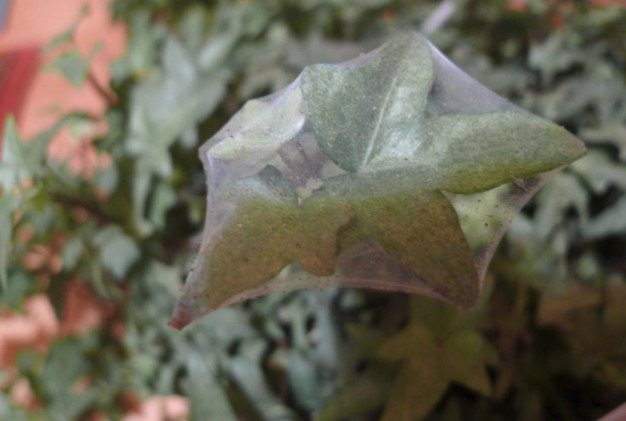

Read more on how to deal with spider mites.
- Aphid... Another sucking insect that feeds on the sap of almost all plants. No matter how harmless the pest may seem, it is always worth remembering that aphids move not only with the assistance of ants, but also on their own, since they have wings. To prevent the spread of the infection in the garden, you should treat the bush with the following insecticides of your choice: Karbofos, Intavir, Iskra, Commander.
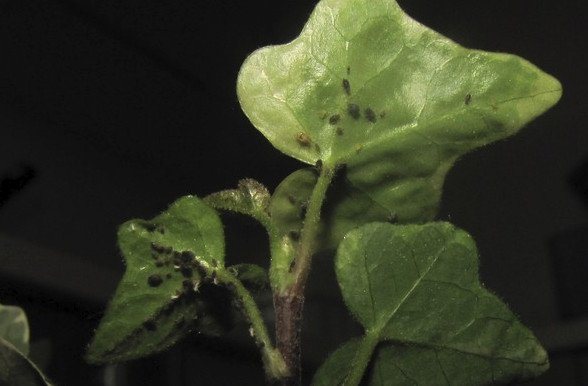

- Shields... Unpleasant pests, which are difficult to get rid of mechanically, and chemistry does not take their larvae, therefore, in case of severe infection, ivy will have to be processed several times. The scale insects are also sucking pests that cause growth inhibition as well as wilting of foliage. Practically the same insecticides are used for the fight: "Aktara", "Fosbecid", "Aktellik".
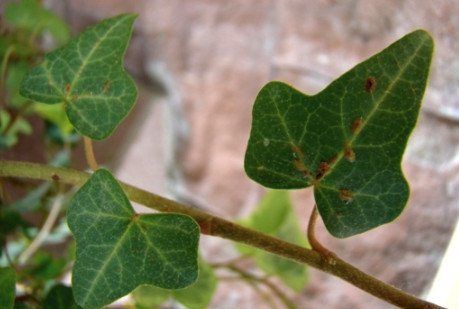

We should also talk about diseases separately. The fact is that ivy is used in medicine for a reason.The leaves and shoots contain substances that destroy bacteria and fungi. It is for this reason that ivy is not affected by diseases, and the deterioration in appearance is directly related to poor conditions or the activity of pests.
With proper care and the right choice of place, ivy can become a real decoration of your site. The main thing to remember is that it tends to grow, so you need to plant it away from valuable crops or buildings.

